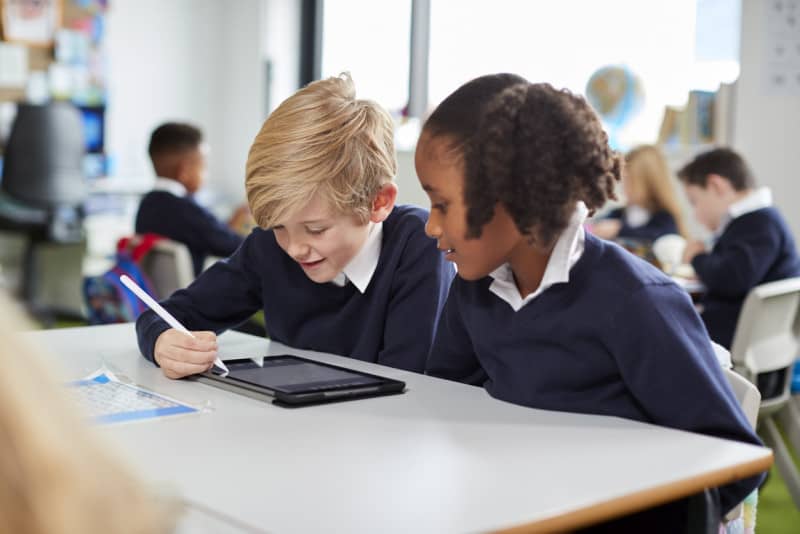According to the Ministry of Education, the UAE has 1,262 private and public schools, one of the greatest numbers of foreign schools in the area.
The choices are therefore limitless, whether you wish to select a certain pricing structure or a specific programme. In order to help you make the best choice for your child’s future, we’ve listed the top five curricula available in the UAE.
1. UK curriculum
36% of kids in Dubai alone are enrolled in schools following the UK curriculum, and enrollment growth is at 8%, the highest level in the preceding three years.
This curriculum is divided into ‘key stages,’ which are blocks of years (KS). The teacher formally evaluates a student’s performance at the conclusion of each major stage.
Children up to the age of five follow the Early Years Foundation Stage (EYFS). It covers the teaching and support staff at child care centres and nurseries and offers a framework for the learning, development, and care of children in their early years of life.
The National Curriculum of England is a broad curriculum covering Arts, Sciences and Humanities. Because of its liberal teaching approach and emphasis on critical thinking and application rather than a strong emphasis on memorization, it is also easily adapted by students who may come from various curricula. Because of its widespread acceptance, it is simple for kids to relocate from one nation to another and continue their education in a school that follows the British curriculum.
2. Indian curriculum
With 79,000 students enrolled in Indian curriculum schools in Dubai alone, or 27% of the student population, these schools are also a popular choice.
The National Council of Educational Research and Training (NCERT), New Delhi, is responsible for designing and developing the Central Board of Secondary Education (CBSE) curriculum. Several schools in the UAE also provide the Council for the Indian School Certificate Exams (CISCE).
Students are able to perform well at colleges around the world thanks to the demanding “board exams” they take in Grades 10 and 12. The Indian curriculum has lately undergone modifications to include more “adaptive skills” as opposed to a large emphasis on memorization.
However, some parents have criticised the curriculum for continuing to rely too heavily on rote learning.
Almost 20,300 schools worldwide offer the examination board, which has been operating since 1952. Each year, nearly three million pupils take the Grade 10 and Grade 12 exams. Almost 16,000 students from the UAE alone took the board exams in 2018.
3. US curriculum
The US Curriculum is based on the Next Generation Science Standards for Science and the US Common Core State Standards for English Language Arts, Math, History/Geography. This provides educators more creative freedom to modify the curriculum to suit student requirements. A wide variety of extracurricular activities are available to students, ensuring that they have the chance to completely grow as people. Personalized instruction is focused on inquiry-based, practical teaching techniques, and top-notch learning approaches.
Almost 50,000 children are enrolled in Dubai institutions that follow the US curriculum. The curriculum’s benchmarked examinations are evaluated by American international schools around the globe, and the results are utilised to create the SAT and advanced placement exams, which are widely used for university admission in the United States.
4. IB curriculum
Even though just 17,236 of Dubai’s students are enrolled in the International Baccalaureate curriculum, it is one of the Emirates’ fastest-growing academic programmes. This curriculum is not in line with any particular nation’s national curriculum, as the title indicates.
In addition to other curricula, several schools also offer the IB curriculum. So, enrolling kids at schools that provide the Indian or British curriculum in addition to the IB curriculum is not unusual. Up until the age of 16, the student might follow a British or Indian curriculum, but for their final years of high school, they would switch to an IB Diploma programme.
5. Ministry of Education
The Ministry of Education programme in the United Arab Emirates was primarily created for publicly funded public schools. However, the Ministry of Education’s curriculum, which includes Arabic, Social Studies, and Islamic Studies courses, must be taught in UAE schools. The entire MOE curriculum is also offered by a few private schools.
5% of UAE pupils were enrolled in schools using the MOE curriculum in 2018. Although Arabic is the predominant language of instruction, social studies and Islamic studies are also available in English.
Also Read: Child facing learning challenges? To help you, here is a six-step guide
